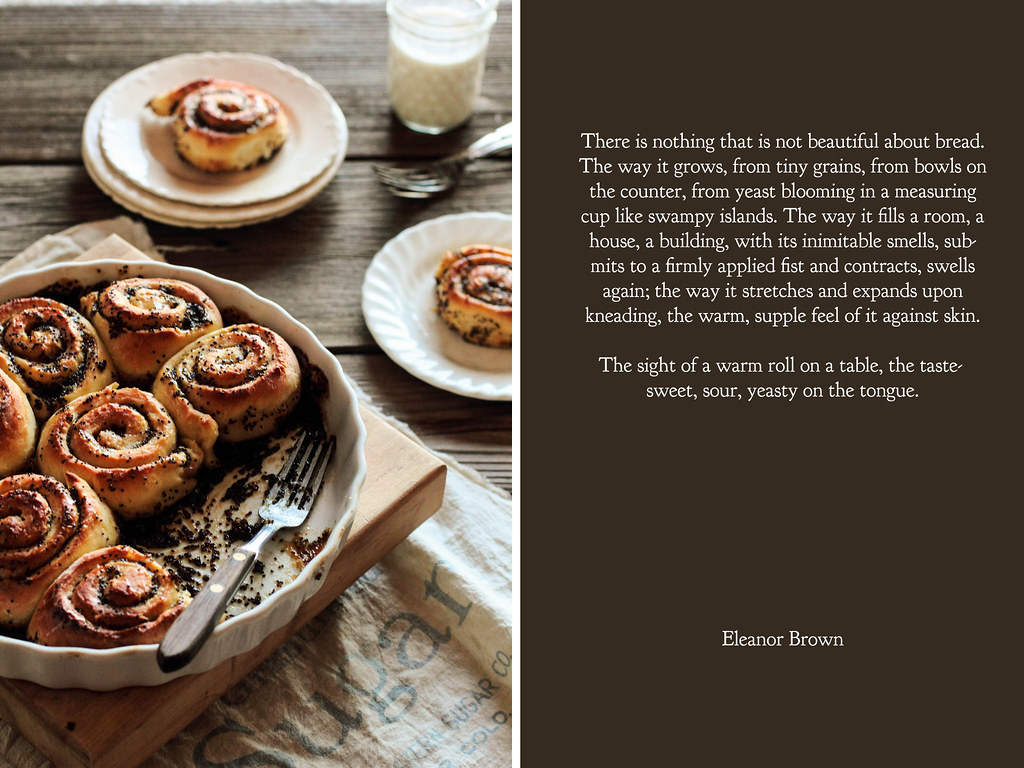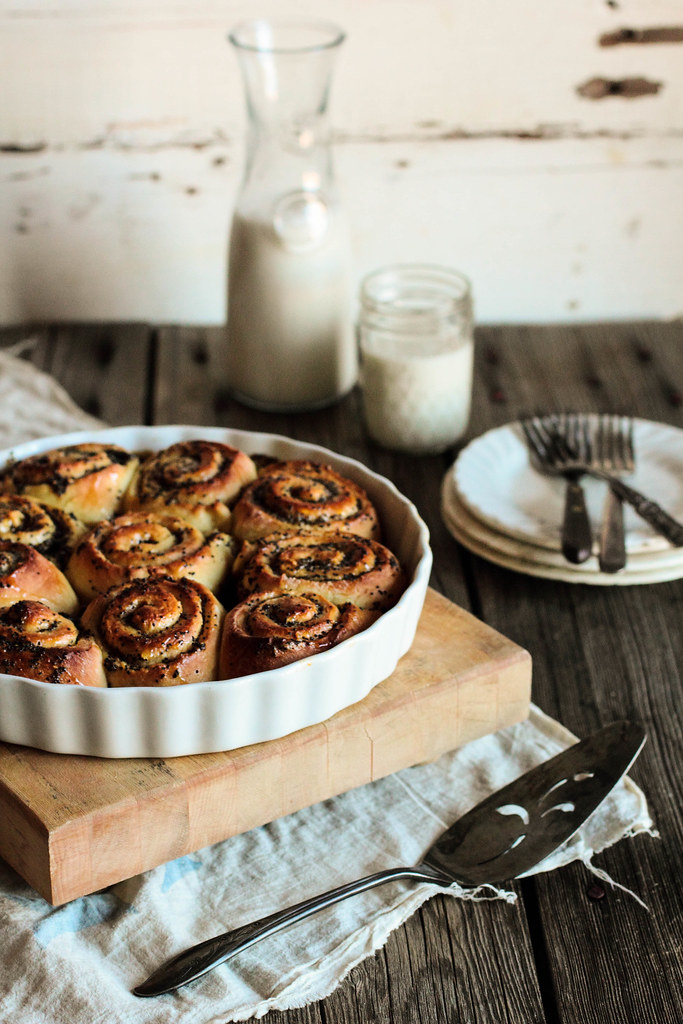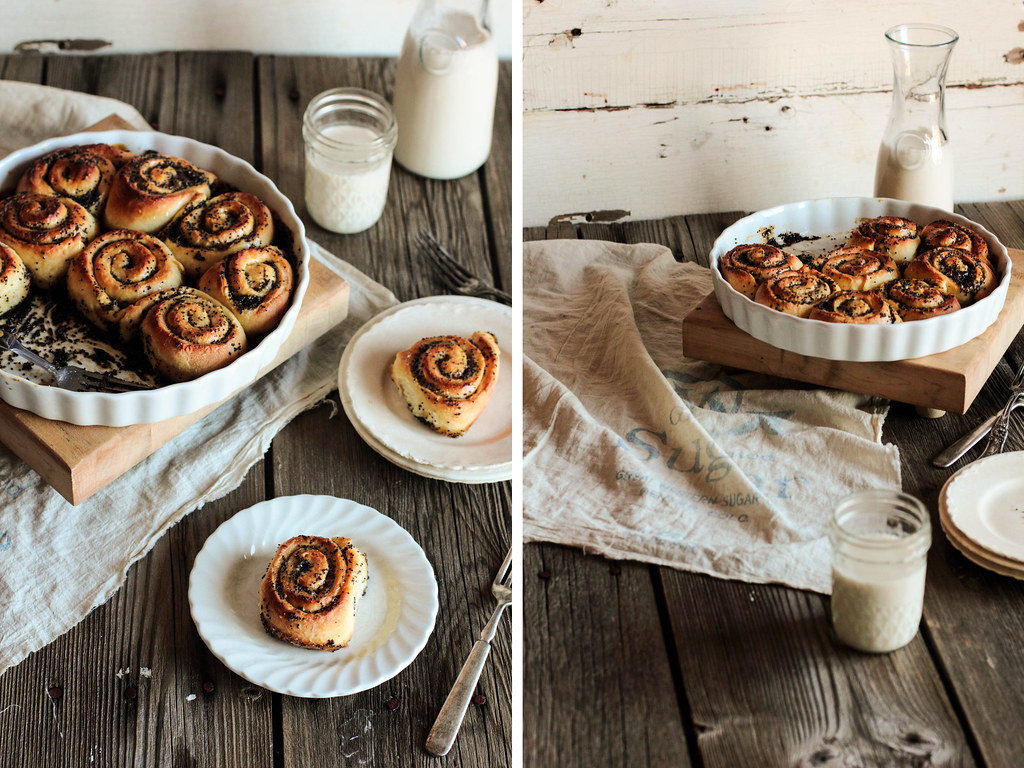Baked Lemon Poppy Seed Doughnuts
/The romance of winter is fading as we enter the depths of the season. The novelty of the crisp, cold air has worn off; we pay no mind to the fleeting clouds materializing and dissipating in time with our breaths. The white snow has darkened, developing an industrial look to match that of the bustling city in which it lay. This month takes on the color gray for me, a match in both weather and mood.
The color gray is washed out. The vitamin D levels drop. The color gray is exhaustion. The news cycle (and the ensuing emotions) is inescapable. The color gray is fatigue. The days blur together in repetition and familiarity. To step out of these gray surroundings, I spent Saturday at an art museum, enveloping myself in a world of color, choosing to step away from my gray reality for a few hours. The atmosphere in museums carries a certain stillness about it, revealing a rich history with a closer look. It is about finding a new perspective in the unexpected pieces that draw the idea and speak to an inner truth.
If you are surrounded in gray, take time to embrace color—whether it be in nature, literature, or an art museum on a Saturday afternoon. Color is the antidote to the oppressive, stifling gray.
The gray began its slow descent back into my life on Sunday, surfacing in my baking and photography. At least until the color of the fruit basket caught my eye; the pink grapefruits and sunshine lemons a reminder of the artwork from the day before.
Lemons are a winter fruit, bright yellow and acidic. When combined with the sweetness of sugar and the subtle nuttiness of poppy seeds, the lemon takes on a bold, vivid flavor. These baked lemon poppy seed doughnuts may have a simple, monochromatic appearance, but the taste is a genuine pop of color in a gray landscape.
Baked Lemon Poppy Seed Doughnuts have a bold personality. The batter is infused with lemon zest and crunchy poppy seeds. The baked doughnuts have a cake-like texture. Don't skip the lemon glaze on these doughnuts—the glaze is mixed with fresh lemon juice and provides a bright, vibrant flavor to the overall dessert. The recipe can be doubled to fit your needs.
One Year Ago: Cacao Hot Chocolate & Bruleed Lemon Tart
Two Years Ago: Cranberry Orange Muffins & Pear Vanilla Sorbet
Three Years Ago: Double Chocolate Brownies, Pear Chocolate Scones, & Honey Oat Bread
Four Years Ago: Rosemary Sandwich Bread, Cranberry Flax Muffins, Chocolate Ginger Cookies, & Vanilla Marshmallows
Five Years Ago: Cinnamon Sugar Cake, Vanilla Bean Pudding, Soft Chocolate Chip Cookies, & Dark Chocolate Oatmeal
Six Years Ago: Chocolate Marbled Banana Bread, Cranberry Wine Spritzer, Quick Chocolate Cake, & Frosted Yellow Cake
Baked Lemon Poppy Seed Doughnuts
Yields 6 doughnuts
Lemon Poppy Seed Doughnuts
1/3 cup (70 grams) granulated sugar
Zest of 1 1/2 lemons
2 tablespoons vegetable oil
1 large egg
1 teaspoon vanilla extract
1 1/4 cups (150 grams) all-purpose flour
1 teaspoon baking powder
1/2 teaspoon salt
1 tablespoon poppy seeds
2 tablespoon lemon juice
1/3 cup (80 mL) milk
Lemon Glaze
1 1/4 cups (140 grams) powdered sugar
1-2 tablespoons lemon juice
Poppy seeds, for sprinkling
Preheat oven to 350 degrees F (180 degrees C). Grease a standard-size doughnut pan.
In a large mixing bowl, whisk together the sugar and lemon zest until fragrant. Whisk in the vegetable oil, egg, and vanilla. Stir in the flour, baking powder, salt, and poppy seeds. Stir in the lemon juice and milk until uniform.
Transfer the batter to a pastry bag (or large resealable plastic kitchen bag with the corner snipped off). Fill the depressions in the prepared pan with the batter until 2/3 full (alternatively, if appearance does not matter, you could spread the batter into the pan using an offset spatula, but this results in more unevenly shaped doughnuts). Bake the doughnuts for 12-15 minutes, or until puffed and a toothpick inserted into the center comes out clean. Cool in the pan for 5-10 minutes, before transferring to a cooling rack to cool completely.
For the lemon glaze, stir together the powdered sugar and lemon juice until smooth. If the glaze is too thick, thin with a teaspoon or two of additional lemon juice.
Dip the cooled doughnuts into the glaze, allowing any excess to drip off. Sprinkle poppy seeds on top. The glaze will take 10-15 minutes to set, depending on the thickness.


































